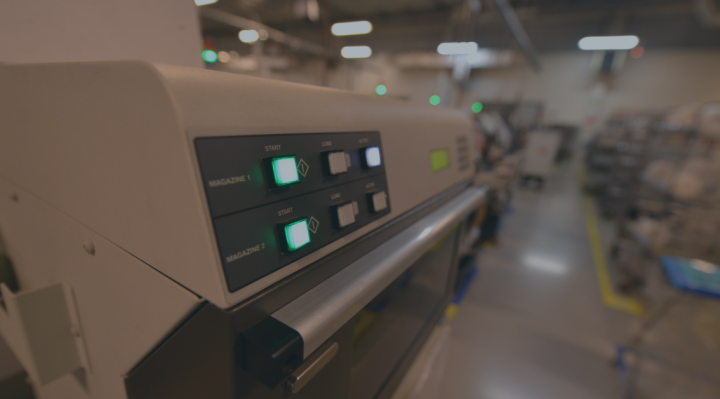In the field of electronics manufacturing, two main methods for mounting components onto printed circuit boards (PCBs) have been dominant: Through-Hole Technology (THT) and Surface-Mount Technology (SMT). Both technologies have their unique advantages and disadvantages, which impact their suitability for different types of projects.
Through-Hole Technology (THT):
Through-hole technology (THT) remains a relevant and significant method in electronics manufacturing, with distinct advantages and drawbacks. One of its key benefits is durability; THT connections are notably strong, making them ideal for electronic components that are subjected to mechanical stress or thermal strain. This robustness ensures long-term reliability in various applications. Additionally, THT is beneficial for ease of testing and replacement. Its design allows components to be conveniently replaced or tested, which is particularly advantageous for prototype development or designs that require manual adjustments and corrections.
However, THT also presents some challenges. The process involves drilling holes in the circuit board, which inevitably lengthens production time and adds to manufacturing costs. This aspect of THT can be a disadvantage in scenarios where efficiency and cost-effectiveness are priorities. Furthermore, the use of holes restricts available board space. This limitation reduces the area that can be utilized for routing signals, making THT less suitable for compact electronic applications where space optimization is critical. Finally, the size of through-hole components tends to be larger than their surface-mount counterparts, posing a hindrance to miniaturization efforts in electronics design. This size factor is a significant consideration in the ever-evolving quest for smaller, more efficient electronic devices.
Surface-Mount Technology (SMT):
Surface-mount technology (SMT) represents a significant advancement in the field of electronics manufacturing, offering a myriad of benefits along with certain challenges. One of the foremost advantages of SMT is the potential for miniaturization. By allowing the use of smaller components, SMT enables more densely populated printed circuit boards (PCBs), which is crucial for modern electronic devices that demand compactness without sacrificing functionality. In addition to size and density benefits, SMT is renowned for its efficiency and cost-effectiveness. The automation of the assembly process not only speeds up manufacturing throughput but also reduces overall costs, making it an economically advantageous choice for large-scale production.
Another advantage of SMT is the ability to perform double-sided mounting of components. This feature maximizes the use of available board space, enhancing the functionality of PCBs. However, SMT also introduces certain complexities. The rework and repair of SMT components are notably more challenging due to smaller lead spaces and the delicate nature of the components. This complexity necessitates a higher level of skill and precision in handling. Moreover, SMT requires specialized equipment and expertise, which can limit its accessibility, particularly for smaller-scale projects or hobbyists. Finally, the delicate nature of SMT components poses a higher risk of damage during both assembly and repair processes. This susceptibility necessitates careful handling and precision during the manufacturing process to ensure the integrity and functionality of the final electronic product.
How to choose?
The choice between THT and SMT depends on the project's specific requirements. THT is preferable for heavyweight applications where durability is crucial, while SMT is advantageous for compact, high-density designs.
A tendency has emerged where both technologies are combined, leveraging the strengths of each. This mixed approach offers the durability of THT for critical components while utilizing the compactness and efficiency of SMT for the rest of the assembly.
Both Through-Hole and Surface Mount technologies have unique profits. Understanding these advantages allows for the application of customized assembly standards, providing solutions that align with specific business objectives and market demands.






